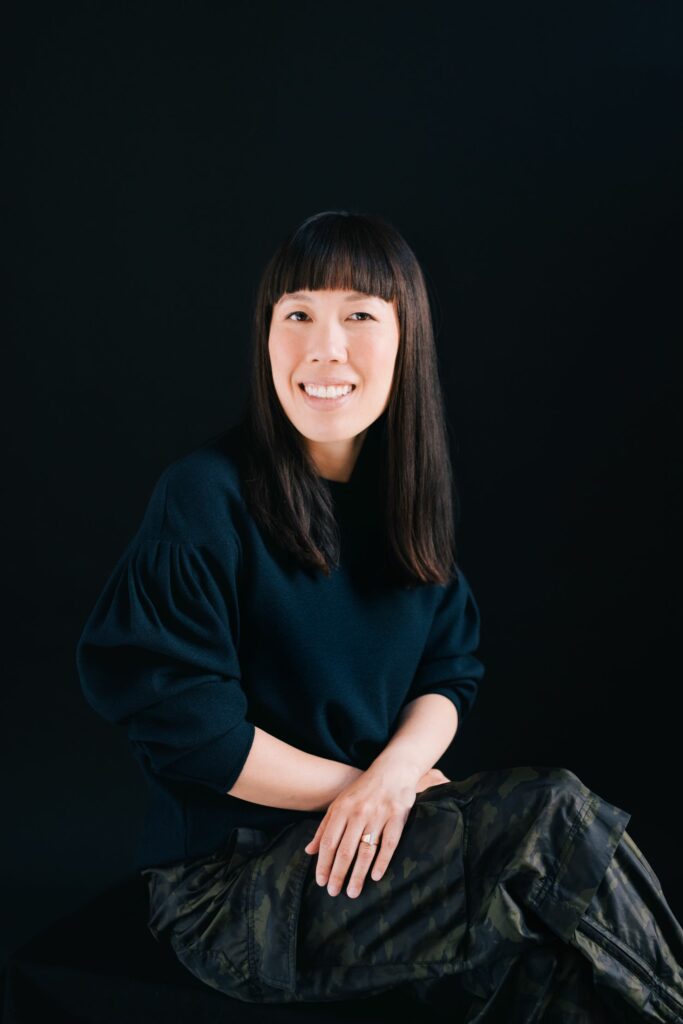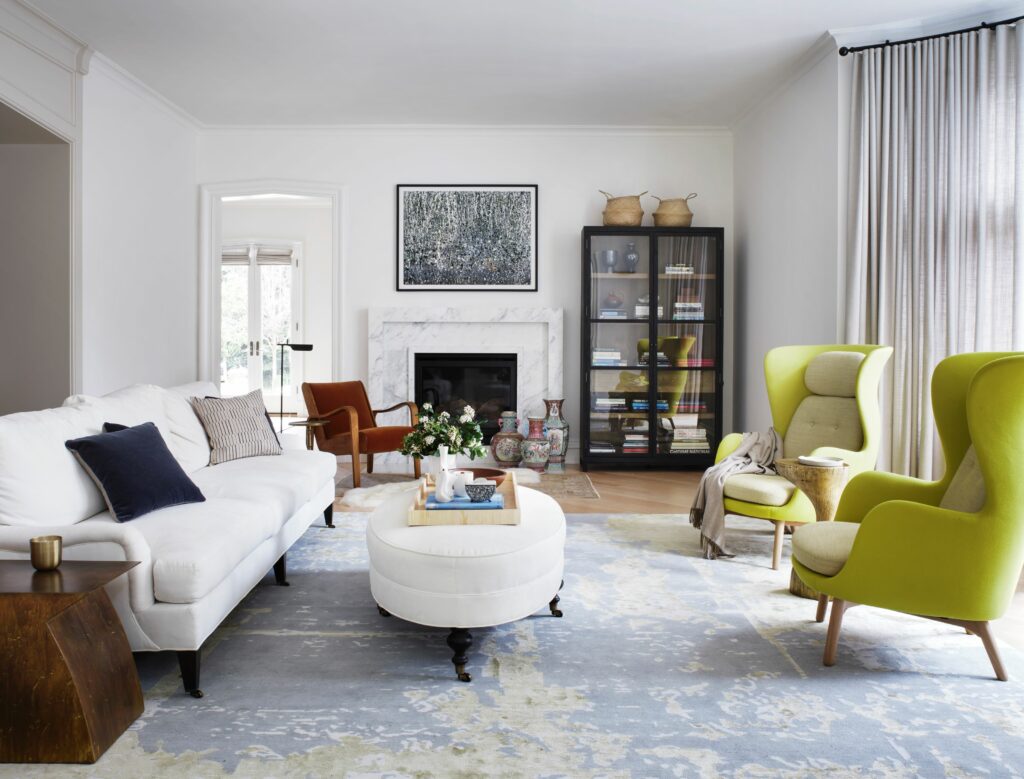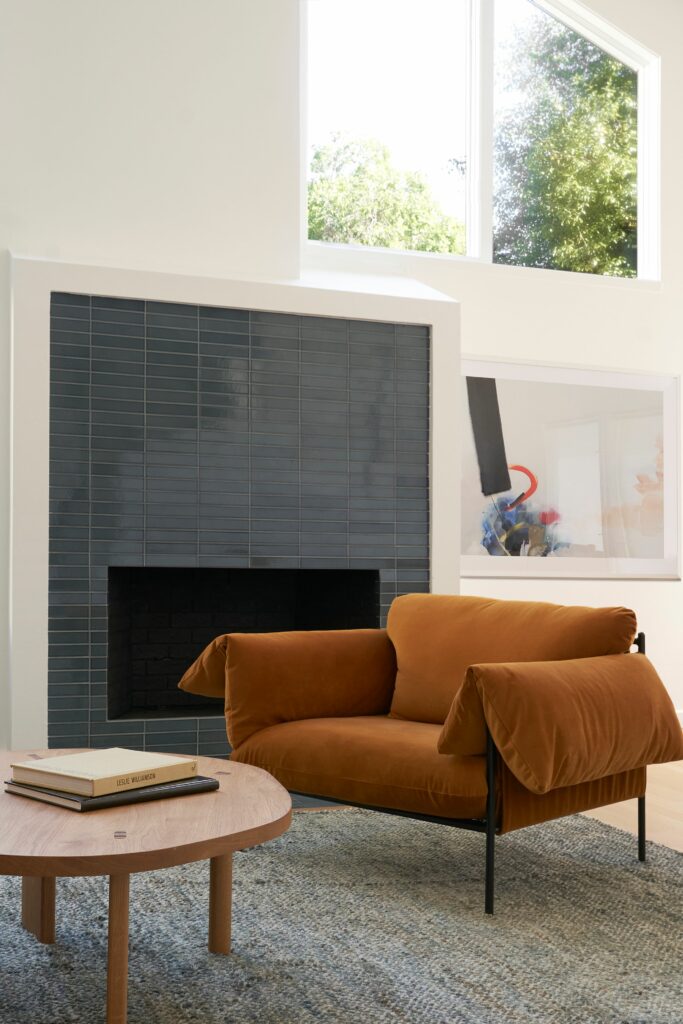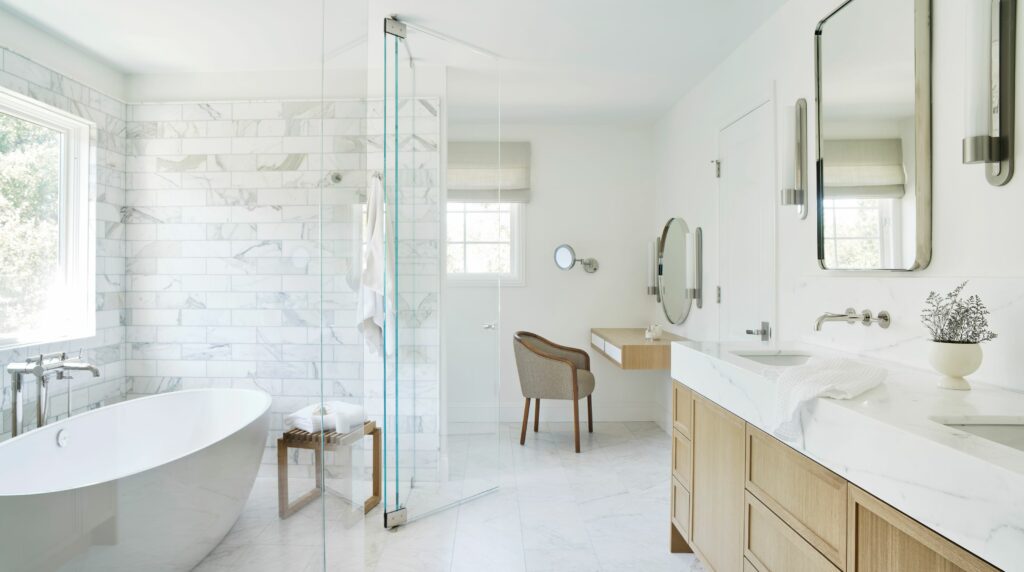Photo Credit: R. Brad Knipstein
Christine Lin, a driving force at Form + Field, brings a unique blend of sustainable elegance and creative innovation to interior design. Her approach seamlessly combines art, architecture, and eclectic modernism, creating partnerships where her vision meets the client’s dreams.
Having earned degrees in Architecture and Mechanical Engineering from MIT, along with an MBA from UC Berkeley, Christine initially embarked on a career in the tech sector. She worked in various roles, from mechanical engineering to program and product management. However, her passion for design was reignited by an unexpected turn of events – a renovation project in Santa Cruz. As she poured her heart and soul into this endeavor, dedicating countless hours beyond her tech job, it became evident that her true calling was in interior design, prompting her to make a full-time transition into the field.
At Form + Field, sustainability isn’t a checkbox; it’s their DNA. From revitalizing existing furniture to fervently advocating for sustainable materials, it’s an intrinsic part of their design process. In this interview, Christine shares her savvy insights into sustainable design and offers a tantalizing glimpse into her vision for Form + Field’s future, where sustainability remains at the heart of their design ethos.

Can you tell us more about your journey in the interior design industry and what inspired you to focus on sustainability?
I’ve had a lifelong penchant for arts and crafts and studied architecture in college, but became disillusioned with the field after doing an internship. Instead I went into tech, first as a mechanical engineer, then program manager, and finally product manager. When I was working as a software product manager at a startup, my husband (then boyfriend) bought a house in Pleasure Point, Santa Cruz. I thought it’d be a fun side project to design and manage the renovation and furnishings. The project began taking up all of my free time – I was spending about 20 hrs/week on it, and then it crept into my workday. That was the point when I knew I needed to find out how to transition into a full-time career as an interior designer. While still working in tech, I started taking on a couple clients to see if I would enjoy working for others and not just myself, and once I confirmed that, I quit my job. I haven’t looked back since!
Sustainability has always been a part of my life. I learned it from my parents who taught me to not waste: not buying more than what you can use, using things until their end of life, and recycling or repurposing those items once they have reached their end of life. It’s so ingrained in me that I don’t really think about it.

How do you assess and internally review the waste practices of your design firm, Form + Field, to ensure they align with your sustainability goals?
As a small firm, we do not quantitatively analyze our practices, but we try our best to follow sustainable guidelines. It’s all about the countless small decisions throughout the design process that help minimize waste. For example, reselling existing furniture that no longer works for the client, reupholstering/refinishing existing furniture or millwork as much as we can, encouraging my team to recommend sustainable materials, double checking material quantity to make sure there are no excessive overages, etc.
What strategies do you use to educate your clients about sustainable design practices, especially when it may not be their top priority?
These practices are ingrained into how we design, and so we naturally incorporate it into the process whether or not our clients have sustainability as a top priority. When there are specific requests (e.g. stain treatments), we do try to educate our clients and be the best resource for them so they can weigh the pros and cons of their decisions.
While it’s not always possible to be 100% sustainable, how do you strike a balance between sustainability and practicality in your design projects?
It all comes down to showcasing that we can create beautiful designs while also caring for the environment. Sustainability isn’t something that can be achieved overnight but we can all do our part in minimizing waste. I live by the credo to design for the long term: for what is timeless and durable. By doing so, this avoids overconsumption and succumbing to the trend cycles since you are creating a space that one will use and love for years to come. Ultimately at the end of the day, as a society, we need to consume less.
Could you share examples of some of the sustainable or easy-to-recycle materials that you frequently recommend to your clients?
- Lapitec and PaperStone for surfaces like countertops, worktops
- Woods that are FSC certified or salvaged, veneers when it makes sense
- Natural fibers such as wools, linens, cottons, GOTS certified when possible

You mentioned that you incorporate vintage products and reupholstered furniture into your designs. Can you tell me more about why you do this and how you find these products?
There is so much good design that has already been produced which is why I’m a fan of vintage and reupholstering furniture. I don’t feel the need to design a new product for the sake of it. Vintage pieces can also have a lot of built-in character that helps a home feel like a home. We search online often for these pieces – some of our favorites include 1stdibs, Chairish, auctions, and local shops.
As a female founder and principal of Form + Field, you’re breaking new ground in a traditionally male-dominated industry. How has your perspective as a woman influenced your approach?
Well, being in the interior design industry, there are a lot of females, but not in the adjacent architecture or construction industries. I do think as a female, it comes through in design decisions. For example, designing a large enough laundry room, thinking through how to organize every single item in the kitchen, or thinking about the effect of lighting in the experience of the space. Those are some areas where I find women pay more attention.
What advice would you give to emerging interior designers who want to incorporate more sustainable practices into their work?
Read, take CEUs, and/or form a group with like-minded people in the industry. There are so many resources out there. Join the Good Future Design Alliance!

Looking ahead, what are your goals and aspirations for Form + Field?
In the near term with regards to sustainability, I’d really like to set aside time to educate the entire team and any new team members on all the various facets of sustainability and creating a bible of sorts for our favorite sustainable materials. Long term, I hope to continue growing the impact that Form + Field has in the industry by providing a great place to work, a high level of design and service for our clients, and eventually, sustainable products.










